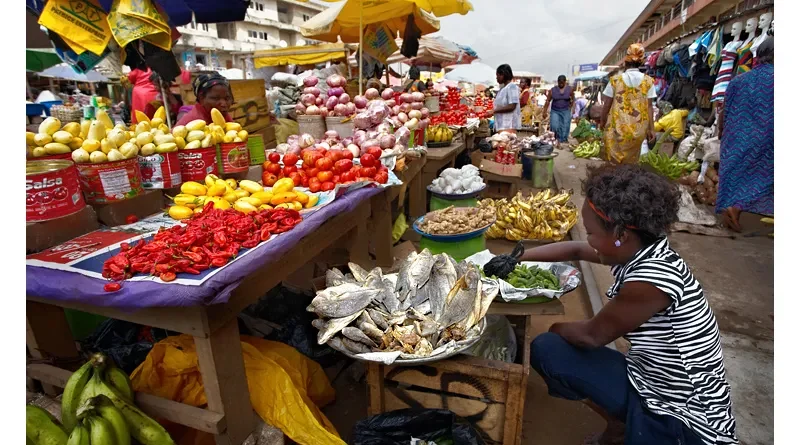Governor Addison Explains Surge in Food Prices Due to Drought Conditions
Dr. Ernest Addison, Governor of the Bank of Ghana (BoG), has shed light on the factors behind the sharp rise in food prices over the past year. Speaking at the 122nd Monetary Policy Committee (MPC) press conference in Accra on Monday, January 27, Dr. Addison pointed to unfavorable weather conditions as the primary cause of the price hikes.
According to Dr. Addison, the early months of 2024 saw severe dry spells in farming communities, which significantly reduced crop yields. This, in turn, led to increased food prices and disrupted the disinflation process. He explained, “Inflation trends in 2024 showed a slowdown in disinflation, largely driven by food price pressures. Inflation rose from 23.2% in December 2023 to 25.8% in March 2024. Although it later dropped to 20.4% in August, it climbed again to 23.8% by December 2024, primarily due to rising food costs.”
The Governor emphasized that the spike in food inflation was directly linked to the drought conditions that hampered agricultural productivity earlier in the year. In contrast, non-food inflation saw a steady decline, ending the year at 20.3%.
Agricultural Crisis and Government Intervention
The drought had a devastating impact on Ghana’s agricultural sector, threatening the livelihoods of over 928,000 farmers and putting the nation’s food security at risk. In response, the previous Akufo-Addo administration implemented a series of emergency measures to mitigate the crisis.
One of the key steps was the temporary ban on grain exports, including maize, rice, and soybeans, to ensure sufficient domestic supply. “This ban is crucial to protect our food reserves and support our farmers during this challenging period,” stated Bryan Acheampong, the then-Minister of Agriculture.
To further stabilize the situation, the government introduced a cash transfer program, providing GHC1,000 per hectare to the most affected farmers. Additionally, a large-scale grain import initiative was launched, with plans to bring in 300,000 metric tons of maize and 150,000 metric tons of rice. The government also imported 26,000 metric tons of poultry feed to support the struggling poultry industry.
Economic Impact and Long-Term Solutions
The drought affected nearly half of Ghana’s 1.8 million hectares of farmland, resulting in an estimated GHC3.5 billion loss in farmer investments and potential revenue losses of up to GHC10.4 billion. To address these challenges, the government initiated a replanting program, distributing fast-maturing seeds and fertilizers to farmers whose crops had failed.
Dr. Addison also highlighted the importance of improving weather forecasting and preparedness. “We are strengthening our collaboration with the Ghana Meteorological Agency to provide accurate weather forecasts and advisories through the Food System Resilience Project. This will help farmers better anticipate and adapt to future climatic challenges,” he said.
The affected regions, which contribute over 62% of Ghana’s annual grain supply, were hit particularly hard. The government’s efforts aimed not only to address the immediate crisis but also to build long-term resilience in the agricultural sector.
Conclusion
The combination of adverse weather conditions and their impact on food production has underscored the vulnerability of Ghana’s agricultural sector. While the government’s interventions provided some relief, the crisis highlighted the need for sustainable solutions to ensure food security and protect the livelihoods of farmers in the face of climate change.
